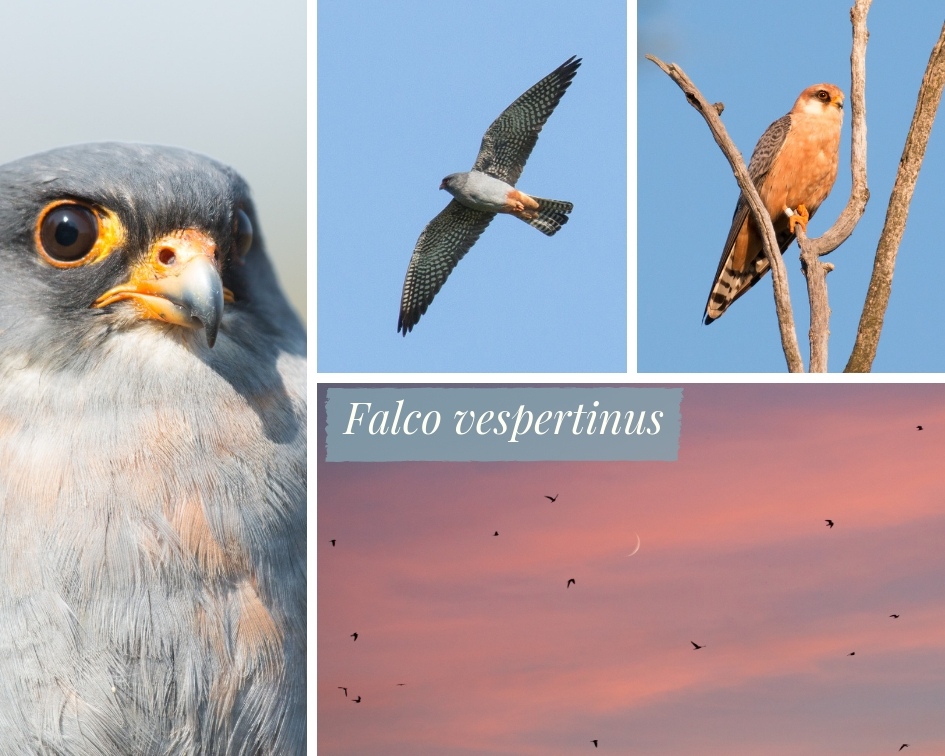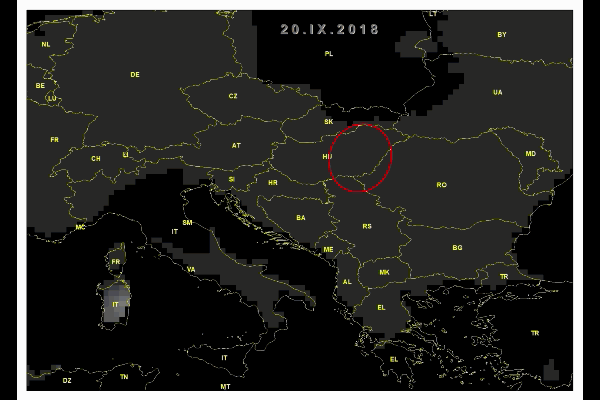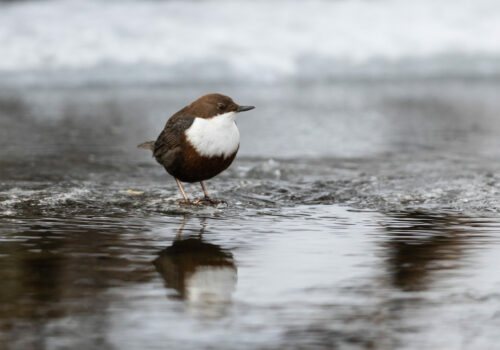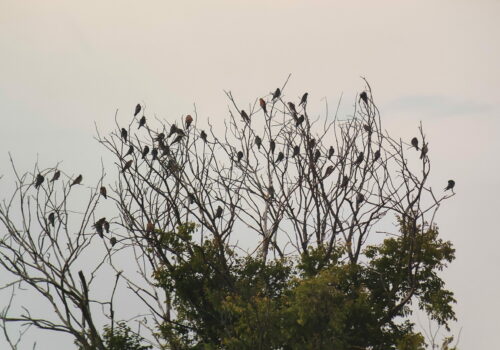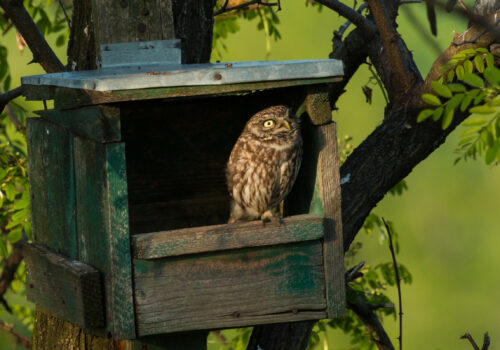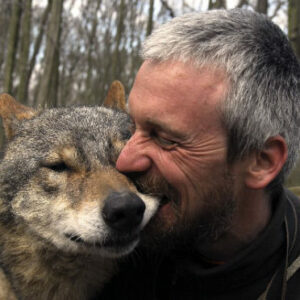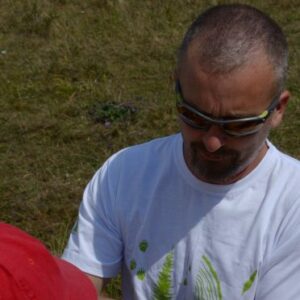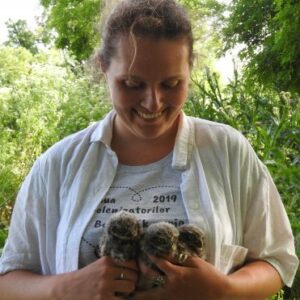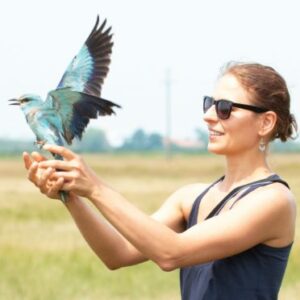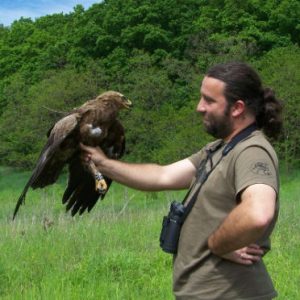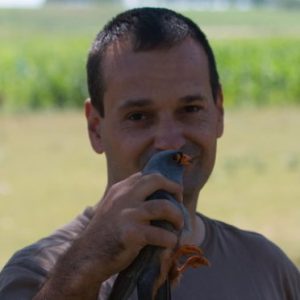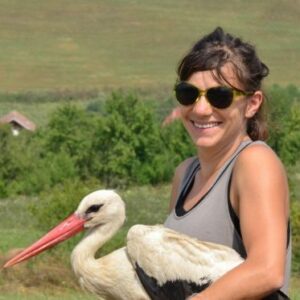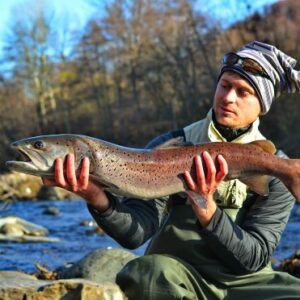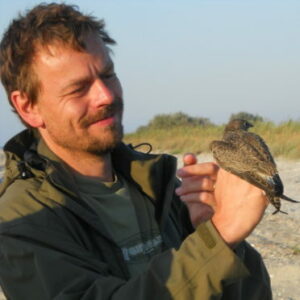Travels 7,000 kilometres twice a year: in autumn, when leaves Europe and heads towards wintering grounds in Africa, and in spring, when makes the way back to the European breeding grounds. Crosses the Mediterranean in half a day, The Carpathian Mountains in two, and the Sahara Desert in less than three days. Females weigh around 165 grams, and males 142.
This is the Red-footed falcon.
In 1766, Carl Linnaeus, the father of taxonomy, named the species Falco vespertinus, vespertinus in Latin meaning „of evening”, derived from vesper – „evening”. The name also refers to „vesper”, the Christian prayer service performed in the evening, which includes rituals and hymns expressing gratitude for the day that has just passed. In the Red-footed Falcon’s case, this ritual is remarkably spectacular in their pre-migration time, i.e. the end of summer and beginning of autumn.
Quite often, numerous crowds gather in these roost sites that offer night shelter for the birds. This is why these are particularly important for the species. We can imagine them as roadside inns on large trade routes where travellers would find food and shelter in the Middle Ages.
Falco vespertinus in the Western Plain of Romania
The protection of these areas is essential because, during this time, the falcons are physically preparing for migration. If the conditions are not right (such as, the roosting sites are disturbed), their stress level increases and the level of physical fitness will be lower. Consequently, the number of birds that survive the fall migration will decrease, less birds will return in spring, and it will take its toll on the breeding population.
Variaș (in Timiș county) is the only monitored roosting spot that does not belong to a Natura 2000 site. This was the reason why we were unable to protect the trees where the falcons were gathering. In 2015, 66 poplars were cut down and only seven were kept. Starting with the fall of 2015, the falcons stopped gathering here (see the graphic below). Since then, some of them reunited on the trees they found a few kilometres away, on the outskirts of the village. This new site, however, is much more disturbed as the trees are near the local farms. Thus, the number of falcons decreased dramatically.
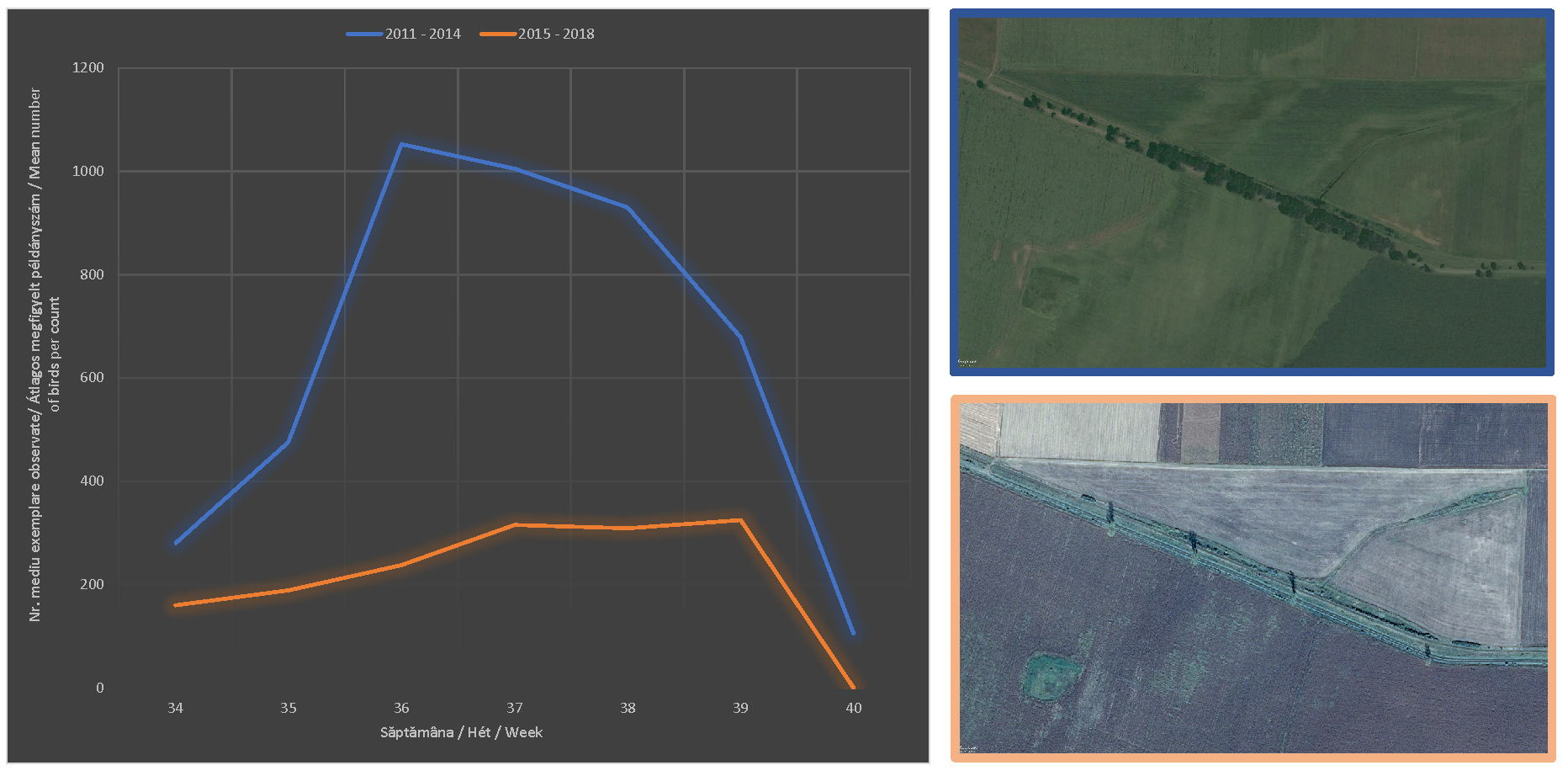
This summer with very little precipitation meant an extended insect swarming time, thus a good source of food for the falcons. As for example, in Livada de Bihor we registered a record number on the 19 September – 160 individuals. This is the highest number of falcons registered in Livada. In our next histogram, you may notice that in Autumn 2018 we counted more falcons than in any other years before. Even though the end of the pre-migration season (end of September) is much lower than in previous years, we ought to add that, on 7 October, we counted 10 Red-footed Falcons in Livada. We have never before noticed the species here as late as that. Two of these individuals are local birds that were identified by their coloured rings: one juvenile ringed this year and a two-year-old female, ringed last year. In our 12 years of monitoring (2007-2018), we’ve got in total 349 observations, and this is only the second October observation of ringed birds.
Carpathian Basin – roosting sites: Falco vespertinus in numbers per country in 2018 (left), Carpathian Basin: cold weather front 20-25 September 2018 (right)
In order to get information about the distances (and their time span) Red-footed falcons cover, we tag the birds with satellite trackers. Out of the 29 falcons tagged so far by the Hungarian Ornithological and Nature Conservation Society (MME) and Milvus Group, only one female, Ringló, is still active. She is now in Angola.
According to the census we undertook in the pre-migration roosting sites this year, the numbers are approximately at the same level as in the previous years. You may take a look at the histogram made by our Hungarian colleagues with the data they collected from the entire Carpathian Basin.


